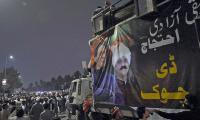At the turn of the millennium, India arrived on the world stage as one of the fastest growing economies alongside China, and an emerging global power.
The burgeoning Indian middle class, the country’s cultural soft power and its technological advancements were the main stay of the ‘rising and shining India.’ There were debates on including India in the United Nations Security Council as the sixth permanent member. At the same time, the Nehruvian India’s democratic spirit and secular visage that celebrated religious diversity, ethnic heterogeneity and composite culture was the stuff of legends.
Unfortunately, in less than two decades the miraculous turnaround has run into serious roadblocks thanks to the ruling Bharatiya Janata Party (BJP)-led wave of Hindu majoritarianism that has saffornized the Indian polity. The majoritarian wave, which is in full swing at present, is bent upon transforming India into a Hindu rashtra. Under the BJP-RSS umbrella, cow vigilante groups and anti-Romeo squads have mushroomed; these target Muslims with impunity. Likewise, Indian Union Home Minister Amit Shah harbours ambitions of rewriting Indian history from an “Indian perspective.”
In his first term, from 2014-2019, Prime Minister Narendra Modi was a little more circumspect given his tainted past and the negative image associated with him. Modi engaged in a charm offensive regionally and globally to re-cultivate himself as a leader who had put his past behind him. Moreover, he embraced the US alliance with both hands as a counterweight to China, taking a departure from the Nehruvian foreign policy outlook of non-alignment.
However, since his re-election this year Modi has been much more ruthless. The landslide victory in May 2019 election has set the stage for the BJP to move ahead with its right-wing agenda which excludes Muslims from its idea of nation-building. For instance, the unilateral abrogation of Article 370 and subsequent bifurcation of the Indian-held Kashmir into two union territories – Ladakh, and Jammu and Kashmir — has alienated the Kashmiri Muslims. Doing away with Article 370 was a long-term dream of the Sangh Parivar.
Similarly, the Babri Masjid-Ram Temple verdict decided in favour of the Hindu community left Indian Muslims unwanted in their own country. Though the Indian Supreme Court (SC) ordered allotting alternative land to the Sunni Waqf Board for the construction
of a mosque, for the Muslim community it was a matter of self-esteem, not real estate.
Likewise, the implementation of the National Register of Citizens (NRC) implemented in Assam singled out Muslims. The NRC required Assam residents to furnish some documentary proof of their ancestry or residence to register as citizens. Given the poor documentation and record keeping in India, the majority of them do not have such proper documentation.
More recently, both houses of the Indian parliament have passed the controversial Citizen Amendment Bill (CAB) that legalizes systematic discrimination against the Muslims. The CAB will allow citizenship rights to minorities facing persecution from Pakistan, Afghanistan, and Bangladesh — except for Muslims. While there were enough asylum laws and refugee conventions, the CAB has been introduced to make religion the basis of nationality. There is a widespread fear that this could be a precursor to nationwide implementation of the NRC.
By passing the CAB as a law, India has become the third country after Nazi Germany and the South African Apartheid regime to legalize systematic discrimination. Appadurai maintains that this is alarming because it is “closing the gap between the fascism of law (procedural fascism) and the fascism of the streets (substantive fascism) in India.”
Needless to say, such steps will prove disastrous for India’s economic growth as well as its global image. At the heart of these steps lies an insecure mindset that fears minorities and dehumanizes them as ‘others’ and ‘outsiders’. This faith-based otherization is sustained through hate speech, conspiracy theories and ostracization.
The institutionalization of faith-based discrimination through legal frameworks could have three broader consequences in India. First is intellectual stagnation: communities fail to grow as they claim to know the absolute truth – that is: their version of religion is the only path to salvation.
Second is siege mentality: the default position of such narratives is existential in nature — such as ‘Hinduism is in danger’, so they spawn narrow-mindedness divorced from empirical reasoning. The third is witch-hunting: once RSS-like aspirational ideological movements are done fighting the out-groups, they turn their focus to in-groups to weed out religious impurities. The search of ideological purity and piety is a downward spiral because whose version of religion is correct is a never-ending debate.
Arguably, the CAB is the proverbial last nail in the coffin of the Indian secular-liberal order, and heralds India’s decent into authoritarianism. As Indian saffronization comes full circle, the Sangh Parivar’s ultimate goal of a Hindu Rashtra is now within sights. The romance of Indian democracy and federalism is ending rather tragically.
The writer is a research fellow at theS Rajaratnam School of International Studies, Singapore.
Email: isabasit@ntu.edu.sg
Data, today, defines how we make decisions with tools allowing us to analyse experience more precisely
But if history has shown us anything, it is that rivals can eventually unite when stakes are high enough
Imagine a classroom where students are encouraged to question, and think deeply
Pakistan’s wheat farmers face unusually large pitfalls highlighting root cause of downward slide in agriculture
In agriculture, Pakistan moved up from 48th rank in year 2000 to an impressive ranking of 15th by year 2023
Born in Allahabad in 1943, Saeeda Gazdar migrated to Pakistan after Partition







